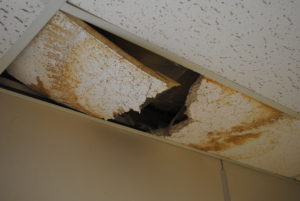While Fix Our Schools focuses on the importance of quickly addressing the $15-billion of disrepair that has accumulated in Ontario’s publicly funded schools, many people in rural Ontario are more concerned about actually keeping a school in their community. As one citizen who lives in Flesherton wrote to us, “you can’t fix a school you don’t have!”
True point.
In rural and northern Ontario, school closures are being encouraged by our provincial government in the name of “efficient use of resources” – even if that means students spend 2 hours each day on a bus. The Ontario Alliance Against School Closures (OAASC) is backed by close to 1-million Ontario citizens and is calling on the Ministry of Education to enact a moratorium on school closures until such a time that funding can be aligned fairly and the Pupil Accommodation Review Guideline is rewritten with a democratic respect for communities, local economies and local governments. The OAASC spoke to the devastating cost of school closures on communities at the Minister of Finance’s pre-budget consultations in London on Friday, January 20th.
Susan MacKenzie, an OAASC co-founder said, “with an estimated 600 school closures, it is the rural and northern communities that will be hit the hardest.” MacKenzie contends that the Student Transportation Grant could balloon to $1 billion in the near term to cover the increased costs of transporting students longer distances to schools. She says, “if the Ministry of Education can find this kind of money for transportation, they can find savings to keep rural schools open.”
In Suburban areas of high growth, citizens have other concerns. In many of these areas, classrooms are bursting at the seams.
In suburban Ontario, student populations are growing so quickly that classrooms are routinely overcrowded. In the Globe and Mail article from December 18, 2016 entitled, “In Milton, Ont., crowded classrooms put Canada’s fastest-growing town to the test”, the reality of a growing school population is explored.
In order to efficiently use the assets we call schools, school boards alter school boundaries to address crowding issues at schools, or if a new school is built. While on paper, this seems like a good idea and certainly optimizes efficiency of how school buildings are used, the reality is that children can be forced to move schools frequently. As one parent says, “You don’t feel connected or attached to a school. You kind of feel like you’re being thrown around,” she says. “Right now, I’m pretty confident that we’re so close to the school, we shouldn’t get switched. But with this whole neighbourhood being built, I mean really, anything can happen.”
Another common solution is portables, which do not provide an ideal learning environment. Students can feel isolated from the main school building and the rest of the school community. The conditions of portables are not routinely assessed, so poor conditions can go unaddressed. Yet, new schools in suburban Ontario routinely open their doors, already requiring a multitude of portables on their school site to accommodate the number of students attending the school on day one!
So while Fix Our Schools continues to focus on ensuring that all Ontario students attend safe, well-maintained schools that provide environments conducive to learning, we are also very sensitive to these additional challenges faced in both rural and suburban areas of our province and support work to address these issues as well. Interestingly, the root cause of all of these issues is the provincial education funding formula. Quite simply put, this funding formula has not provided what is needed for any Ontario community over the past 20-years and must be overhauled.

